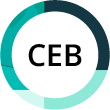CEB digitally connects labs in Cambridge & Singapore
CEB Researchers optimise a chemical reaction in Cambridge from Singapore

Researchers from the Department of Chemical Engineering and Biotechnology (CEB) have autonomously optimised a chemical reaction by digitally linking labs in Cambridge and Singapore. This breakthrough could help integrate and automate research laboratories around the world, which in turn could dramatically advance scientific discovery and tackle pressing global challenges.
This work was carried out under the leadership of Professor Markus Kraft and Professor Alexei Lapkin, both from CEB. The paper's first author was Jiaru Bai, supervised by Prof.Kraft, and it was published in Nature Communications. The research team used an intelligent digital ecosystem developed under the supervision of Professor Kraft, known as The World Avatar, to link Professor Lapkin's lab robots at CEB and Cambridge’s overseas research centre in Singapore, Cambridge CARES.
Credit: Jiaru Bai
Once incorporated within this ecosystem, the team set the connected robots a research goal: optimise the cost vs yield of a pharmaceutically-relevant chemical reaction. The linked labs used autonomous computational agents to automatically conduct experiments – seamlessly exchanging data and results in real-time despite being on opposite sides of the globe. In just three days, they produced the optimal conditions for the reaction with no further human input.
“We have demonstrated how labs’ geographical boundaries can be eliminated to autonomously work towards a common goal. Connecting labs around the world in this way could dramatically accelerate chemical discoveries, reduce lab operating costs, increase sustainability, improve collaboration and more.”
This work is part of a larger project to fully digitise all aspects of a lab within The World Avatar’s digital ecosystem. This “Digital Laboratory Framework” could go beyond a single device or experiment to create autonomous digital counterparts such as:
- A “Digital Research Scientist” who could plan, conduct, and analyse experiments based on chemical knowledge, access to live data, and control of equipment (such as measurement devices and robots).
- A “Digital Laboratory Manager” who monitors all ongoing activities in the lab to ensure safe operations, assigns workspaces, and tracks equipment.
- A “Digital Facility Manager” who ensures stable environmental conditions and improves resource efficiency by monitoring utilities and controlling airflow, temperature, and more.
These digital roles could work seamlessly together to create a live, connected digital framework of labs around the world, which could then execute more high-level and complex goals while facilitating cross-scale and cross-domain research collaborations and representing a step beyond connected digital twins. Researchers can now set goals to not only optimise experiments but also increase the efficiency of the laboratory and chemical research process in general.
“The beauty of the World Avatar digital lab framework is that all data, software, hardware, and workflows are connected and interoperable. By creating knowledge representation of the real world, the applications transcend traditional boundaries, facilitating cross-scale and cross-domain research collaborations”
Access the full paper here.

